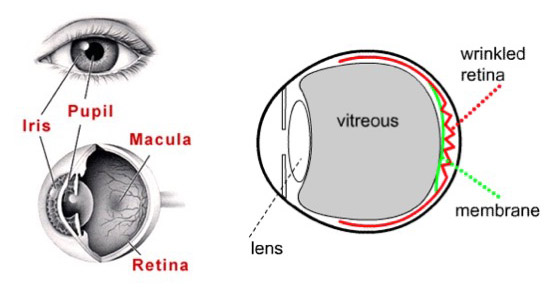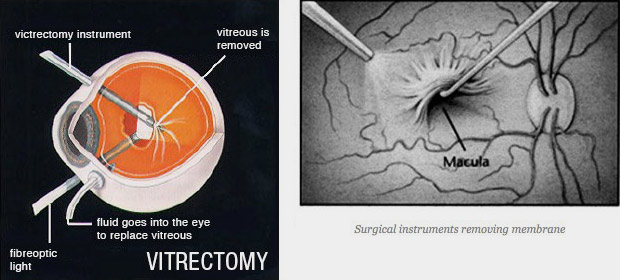The Epiretinal Membrane
This is a thin membrane which forms over the surface of the retina, often in the most sensitive part of the eye responsible for vision, called the macular. This thin membrane contracts and throws the macular into folds, resulting in blurred central vision, often with distortion. This may cause difficulties with reading, driving, watching television, using a computer and may also cause you to have difficulty in judging distances such as climbing/descending a flight of stairs or pouring a drink.


